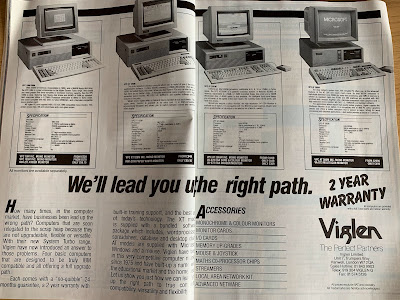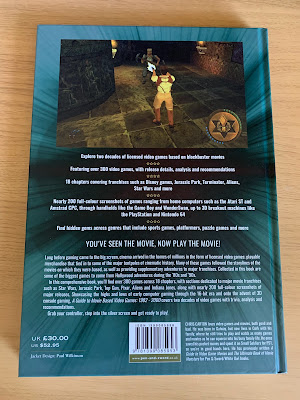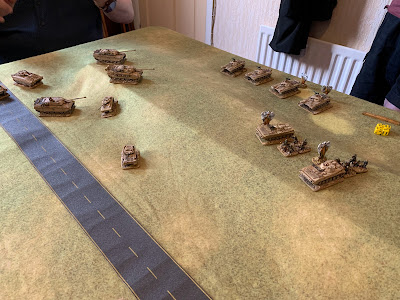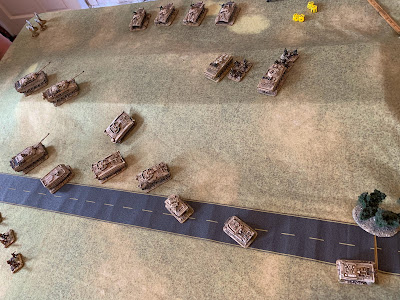Cast your mind back thirty six years (if you are old enough to do so). What do you remember about the autumn of '87? Michael Jackson's Bad album sitting on top of the charts? Rick Astley delivering both a perfect election manifesto and the best philosophical paradox ever? Were you watching Lethal Weapon and The Living Daylights at the cinema? Or were you doing what I was and reading the latest issue of Britain's biggest microcomputer (that dates things) magazine, Personal Computer World?
1987 was smack bang in the middle of Amstrad's dominance of the UK computer market. For "home" users, the CPC range had you sorted. "Serious" users could rely on the very cheap PC1512/1640 combo (their portable PPC512/640 brethren were a few months out yet). For those "serious home" (a category that Acorn would continue to trot out to justify the pricing of their Archimedes range for years) users, the PCW was the one for you, and it was the latest in that range that PCW (confusing, isn't it?) placed on their cover.
At just under 300 pages, this isn't yet the chunky behemoth that the 1990's would witness, but neither is it a small magazine either. Colour is limited throughout, with editorial making the most of it and adverts in either mono or just a couple of colours.
Newsprint begins on page 56 with the announcement that Atari is developing a Transputer system. For those not in the know, Transputer was a parallel processing based system that was supposed to herald the next generation in processor architecture. It didn't quite work out like that and, although Atari did release the Atari Transputer Workstation, only around 250-300 were actually made and the architecture itself disappeared in the early 1990's. Other than that, it seemed a pretty quiet month.
The review of Amstrad's latest is given four pages and the overall conclusion is that the company had done an excellent job of improving the 8000-series and the extra cost (£499) was worth it. To be fair, it was a seriously nifty little machine and if you didn't want the complexity (or cost of a DOS-powered machine) but you did want a printer, then the package was very much cracking value for money.
Next up comes a double review of 386-powered desktops, and these were pretty impressive beasts for the time. The Mission 386 faced off against the Tulip 386 AT, and in the specs race, both featured a 16MHz chip (note, this was before the1988 SX/DX split, so these were full 32-bit data bus specimens, or DX's under later nomenclature). The Mission rocked 2MB of RAM, a 40MB hard drive and a single 1.2MB 5.25 floppy in a case weighing 47lbs (WTAF?) which measured 20ins x17ins x 7ins. Tulip supplied their competitor with 1,640kb of RAM but the same storage abilities. Its case measured only 15ins x 17ins but is described as very heavy. What, heavier than 47lbs??? Both came with MS-DOS 3.2 for the review, and both were considered decent, even considering their individual foibles. As for the pricing, well, the Mission as supplied and with a mono monitor would set you back £3290. And that's without VAT. Bump the hard drive to 80MB and you'd pay £3,990, whilst 130MB would take the cost to a whopping £5,990! EGA pricing options were yet to be decided. Tulip would give you a 386 AT for 4,225 golden beer tokens if you wanted a Hercules mono monitor, four colour CGA (mostly purple) would take that to 4,560 tokens, and the technicolour joys of EGA graphics would set you back 5,095 of Her Majesty's doubloons. Crikey. And if you wanted a Microsoft-compatible mouse? £96. Ninety-Six Quid! Ok, not that much when you're dropping six grand plus Nigel's share on the main event, but fookin' 'ell!
At least sense was restored with the next piece, a look at... oh, nope, no it wasn't. Mac upgrades, and the challenges of making a Mac Plus into something useful - hey, don't hate me, the Plus was a very limited machine. Less so than the original Mac, but only just. RAM upgrades were cheaper from third party providers, but the key thing here was the cost of the actual memory chips, the cheapest price quoted was £500 per pair of 1MB SIMMS. Expansion boards to make you Plus go faster were also an option, but fitting a 68020 add-on would be around £3,000. A faster 68000 could be had for about £1,200. The final upgrade was for the screen, and yet here again, prices got silly, mostly because monitors were pricey buggers. One product mentioned uses a 21-inch screen, and a quick perusal of the ads shows that a similar sized monitor alone (19-inch Taxan Viking with a resolution of 1280x960) would have cost £2,150 ex VAT.
It wasn't all seriously expensive tech as PCW also covered the latest in games consoles. Yep, it was Nintendo vs Sega vs Atari, with their NES, Master System and 65XE Computer Games System respectively. Pricing was varied (NES = £159.95 with R.O.B., £99.95 Standard pack, Sega MS at £99,95 and the XE65 hitting £199,95 for the kit and caboodle). The group is described as "gamester's dreams", with the XE being probably the best all round package but with the other two being very singular solutions meriting a closer look. Oh well, can't get it right all of the time...
WordPerfect fans were catered for with a review of the Amiga version, although with some personal gripes expressed and a very apt question as to who the package was for. Costing £250 (and this on top of a £500 single drive A500, where as an A2000 with a hard drive would be better), the reviewer felt that any potential users might actually be better off with the DOS version (and associated hardware) anyway.
We now move to the adverts and, given the publication's vintage, it very much has that period look. Thoughts and Crosses on page 56 has a wide range of stock, also quoting prices VAT inclusive, a rarity at the time. Your basic PC1512 single drive mono display was £516, and the top of the range colour and hard drive equipped model was £1,229. An Atari 520 STFM would set you back £299 (power without the price indeed), with the competing Amiga A500 coming in at £545. 8-bit fans could be happy with a Speccy Plus 2 (£149), BBC Master (£425) or a Colour CPC for £299. Acorn's Archimedes was so new that prices were on application only.
Acorn were at least advertising the Archie, although the seriously grey classical look didn't do it any favours. Arthur, the OS, didn't either, so perhaps for the best. RISC OS was still a couple of years out.
Viglen were stretching their legs with a good range of machines, and comparatively high prices to match. And those cases, darling, they'll just never do! When you consider Amstrad was busy trying to upsell the PC1640, those prices need looking at though as Viglen advertised adding an actual EGA monitor to a 286 would mean an extra £359 ex VAT, with a package including the associated display card costing £449 ex VAT.
It is pleasing, however, to see Morgan Computers present, and that Epson HX20 for £195? Absolute bargain! Also a bargain was shareware, and two vendors went page to page to share their wares... (I don't apologise at all, but also check out Richard Moss' excellent tome on the topic here!).
This issue of Personal Computer World harks back to the time when serious computing magazines abounded. As the genre developed, you still got news and reviews, but the idea of listings disappeared as the readership also changed. The rise of the consumer, not the tinkerer, meant that this publication's approach to the its audience changed, as did the content. Next time, we'll see what the 1990's brought to PCW, but in the meantime, I shall leave you this final advert for a range of productivity software for the Psion Organiser II - including the handy note on the right that "Fingering is that advocated by Harvester's Finger Organiser Typing Method," I don't care what fancy fingering method you used, the Organiser II was in no shape to act as a word processor!



























